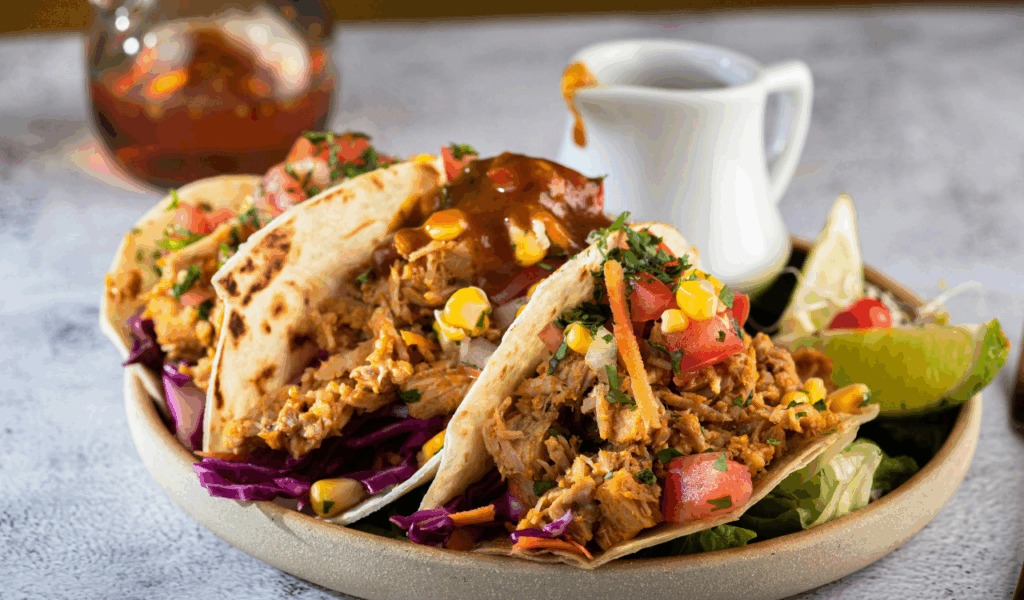11 American Foods With Surprising International Origins

Many foods we consider purely American actually carry stories that span continents and centuries. Each bite reflects migration, adaptation, and cultural exchange, showing how flavors traveled and evolved. From hot dogs rooted in German sausages to chocolate chip cookies inspired by European treats, even staples like pizza, apple pie, and tacos have surprising international origins. Let’s explore 11 iconic American foods and the unexpected places that shaped them into beloved culinary classics.
1. Hamburger – Germany

While widely considered the quintessential American fast-food staple, the hamburger’s roots trace back to Germany. Specifically, the city of Hamburg gave its name to the dish, where minced beef was seasoned and served as a steak-like patty in the 19th century. German immigrants brought the idea to the United States, where it evolved into the sandwich we know today. Over time, it became a cultural icon, appearing on diner menus, backyard grills, and fast-food chains nationwide, symbolizing American ingenuity in adapting foreign traditions.
2. French Fries – Belgium

Despite being called “French,” these golden, crispy sticks actually hail from Belgium. Belgian villagers are said to have fried small fish, and when rivers froze in winter, they turned to slicing potatoes into sticks and frying them as a substitute. American soldiers during World War I popularized the term “French fries” because they encountered the dish in French-speaking Belgium. Today, fries are ubiquitous, served as a side with burgers, chicken, and more, while their history reflects a clever adaptation born from necessity and a love of simple, satisfying flavors.
3. Pizza – Italy

The pizza that defines American culture with its thick crusts, melty cheese, and endless toppings actually finds its origins in Italy, particularly Naples. Early Neapolitan pizzas were simple, featuring dough, tomato, and mozzarella. Italian immigrants brought pizza to the United States in the late 19th and early 20th centuries, where it transformed into regional styles like New York’s thin crust and Chicago’s deep dish. What started as a humble street food became a national obsession, blending traditional Italian flavors with uniquely American innovation and taste preferences.
4. Chocolate Chip Cookies – United States

Although chocolate chip cookies are considered an American classic, their creation was inspired by earlier European biscuit-making traditions. In 1938, Ruth Wakefield invented the cookie at the Toll House Inn in Massachusetts, adding chopped chocolate to a butter cookie dough. This combination created a treat that was both crisp and gooey, quickly spreading across the country. Today, chocolate chip cookies are an iconic dessert, appearing in cafes, homes, and bakeries worldwide, illustrating how a small culinary innovation can spark a global craze.
5. Ketchup – China

The tangy tomato-based condiment we associate with burgers and fries actually has its origins in a fermented fish sauce from China, called ke-tsiap. British sailors discovered it in the 17th century and adapted it, gradually replacing fish with tomatoes, vinegar, and sugar. By the 19th century, ketchup as we know it emerged in the United States. Its journey from Asian kitchens to global tables highlights a remarkable evolution of flavor and culture, proving that even the most familiar American condiments have surprisingly international roots.
6. Hot Dogs – Germany

Hot dogs trace their origins to German sausages, particularly the frankfurter and wiener, which were made from finely ground pork and beef and seasoned with spices. German immigrants brought these sausages to the United States in the 1800s, where they were eventually served in buns at fairs, baseball games, and street stands. The hot dog became a symbol of American convenience food, yet its craftsmanship and seasoning still reflect the meticulous traditions of German butchery. Today, it’s both a nostalgic snack and a culinary icon.
7. Apple Pie – England/Netherlands

Though called “as American as apple pie,” this dessert has European origins, tracing back to England and the Netherlands, where early versions featured apples, spices, and pastry crusts. Settlers brought these recipes to America, where the dish evolved with local apples, sweeteners, and regional baking styles. Apple pie became a symbol of home and tradition in the United States, celebrated in holidays and family gatherings, while still paying homage to centuries of European baking expertise.
8. Bagels – Poland

Bagels were first created in Jewish communities in Poland during the 17th century. This dense, chewy bread with a shiny crust became a staple at religious and social events. Immigrants brought bagels to the United States in the late 19th century, where they became a beloved breakfast item. Modern variations include a wide array of toppings and fillings, from cream cheese to lox. The bagel’s journey demonstrates how cultural traditions can travel and adapt while retaining their distinctive texture and flavor.
9. Spaghetti and Meatballs – Italy

Spaghetti and meatballs are often thought of as a traditional Italian dish, but the version popular in the United States is an Italian-American innovation. In Italy, pasta and meatballs were rarely served together; immigrants adapted the dish to American tastes, pairing tender meatballs with long noodles and tomato sauce. This combination became a household favorite, demonstrating how culinary traditions evolve as they cross borders, blending old-world techniques with new-world creativity to create something uniquely American.
10. Tacos – Mexico

Tacos are a cornerstone of Mexican cuisine, dating back centuries. Corn or flour tortillas filled with meats, beans, and vegetables were brought to the United States by Mexican immigrants, where the dish adapted to local ingredients and preferences. Today, tacos in America range from traditional street-style versions to fusion varieties, including Korean barbecue and vegan fillings. Despite its adaptation, the taco retains its Mexican roots, showcasing a dynamic example of how food crosses cultural boundaries while retaining its heritage.
11. Buffalo Wings – United States/European Inspiration

Buffalo wings were invented in Buffalo, New York, in 1964, yet their preparation was inspired by European fried chicken traditions. Teresa Bellissimo at the Anchor Bar created the now-famous dish by frying leftover wings and tossing them in hot sauce and butter. The recipe captured the nation’s imagination, evolving into countless variations and becoming a staple at sports events. While considered purely American today, their cooking style owes a nod to centuries of global culinary influence.





